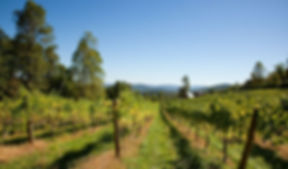If you’re considering starting a winery in Virginia, you’re tapping into one of the most exciting wine regions in the country. The state’s diverse climate and rich agricultural history provide a fertile ground for aspiring vintners. However, choosing the right property is crucial to your success. Let’s explore some key factors to consider when selecting land for your Virginia winery.

Climate
First, it’s important to assess the location’s climate. Virginia has multiple microclimates, with varying temperatures, humidity levels, and rainfall patterns. Each can significantly affect the type of grapes you can grow successfully. For example, areas in the Blue Ridge Mountains or western parts of the state tend to have cooler climates, which might be more suitable for varieties like Cabernet Franc or Petit Verdot, while the warmer, more humid regions could support grapes like Viognier. You’ll want to research historical weather data for your prospective area and consider its potential impact on grape-growing.
Soil Quality
Soil quality is another key consideration. Virginia’s geology offers diverse soil types, including clay, loam, and sandy soils. The best vineyard soils provide good drainage, which prevents waterlogging and promotes healthier vine roots. Before purchasing land, it’s wise to have a soil analysis done to determine its composition and suitability for vines. You may even want to consult a viticultural expert who can recommend any amendments or treatments that would optimize the soil.
Topography
Next, consider the topography of the property. Grape vines thrive on slopes because the elevation allows for better air circulation and reduces the risk of frost settling in. Hillsides also improve drainage and help prevent fungal diseases, making them ideal for vineyard planting. South-facing slopes, in particular, offer more sunlight exposure, which is crucial for ripening grapes, especially in a temperate climate like Virginia’s.
Access to Water
Access to water is another critical factor. Vineyards require a consistent water source, particularly in their early years of growth. Check whether your prospective property has access to wells, streams, or irrigation systems. While grapes are more drought-resistant than many crops, reliable water access can be a lifesaver during periods of extreme heat or dry spells.
Infrastructure & Transportation
You’ll also want to think about the infrastructure required to support a winery. Proximity to main roads for transporting wine, utilities for your production facilities, and a space to create a tasting room or retail shop are all factors to take into account. Additionally, zoning regulations and permits vary from county to county in Virginia, so it’s essential to check local laws regarding agricultural land use, building structures, and the production and sale of wine.
Market
Finally, think about the property’s potential as a destination. Virginia wineries are known for their agritourism, with many offering tasting rooms, event spaces, and scenic views that draw visitors. When choosing land, envision how your vineyard will look and feel to guests. Scenic views of the Blue Ridge Mountains or rolling hills can enhance the overall experience for visitors and add to the appeal of your winery.
Creating a winery is a long-term investment, but with careful planning, Virginia’s diverse and vibrant landscape offers the ideal backdrop for producing world-class wines. Starting with the right property ensures that you lay the foundation for a thriving vineyard and a successful business in one of the nation’s most exciting wine regions.

